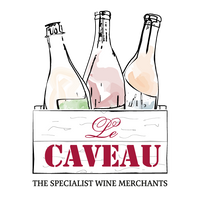Résonance refers to the balancing energies of earth and sky that affect the creation of a wine from its surrounding terroir. Résonance is from biodynamically farmed Pinot Noir sourced from massale selection vines 35-40 years in age from a single parcel located in Polisot. The fruit comes from the top of the slope where there is little topsoil with clay and Kimmeridgean limestone bands like those found in Chablis. The wine is fermented in stainless steel using native yeasts for both fermentations, aged in stainless steel and bottled with no dosage. 100% Pinot Noir.
CHAMPAGNE MARIE COURTIN, DOMINIQUE MOREAU, Côte de Bars - Organic
Champagne Marie Courtin is located in the village of Polisot in the Côte des Bars, in the southern part of the Champagne region. With its slightly warmer temperatures, this area is particularly prized for its Pinot Noir grapes. Combined with the Kimmeridgean limestone sub soils, the champagnes retain a freshness similar to Chablis, which is actually closer to Polisot than Reims! In fact, many of the Grand Marques source their Pinot Noir from the Côte des Bars because of this unique combination of texture and delineation that the sub-zone provides.
Dominique Moreau created the estate in 2005 with a vision to produce a series of single-vineyard, single varietal, single vintage Champagnes from biodynamically-grown grapes that are farmed and elaborated with meticulous care. This philosophy is in stark contrast with the predominant mindset in Champagne which is all about blending grapes, vineyards and vintages (for a consistent product), and with a tendency towards very high yields and full-on chemical treatments.
Dominique named her estate after her grandmother, Marie Courtin, whom she describes as a “woman of the earth”. Most of her wines come from a hillside vineyard of 40-45 year old, massale-selection Pinot Noir in Polisot. The combination of low yields, clay-limestone soils (with bands of Kimmeridgian) and an east/southeast exposure gives the wines both power and cut, with an intense brininess and minerality at their core.
The estate makes several cuvées, the largest of which are called “Résonance” and “Éfflorescence”, the former fermented in stainless steel, the latter in used barriques. The grapes for Efflorescence tend to come from the bottom of the hill, which she says “has greater power and potential”. At harvest, the grapes are all harvested by hand. The wines are fermented with natural yeasts that have been selected from their vineyards and cultivated separately. These native yeasts are used for both the primary and secondary fermentations. Lastly, there is no dosage added upon disgorgement.
The style of all her wines is super-energetic and chiselled, though with an underlying power from both her viticultural practices and the terroirs and varietals that she exploits. These are spectacular wines at the table as they combine multiple vectors of complexity, power and delineation that all play off each other depending on the dishes they are served with.




